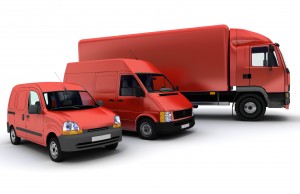Hidden Fleet Savings
This is a story about hidden fleet savings.

For the last couple of years, the costs of keeping commercial fleets moving have stayed at a standstill. This is certainly attributable to the low cost of gas, which has been great for many and, it goes without saying, bad for many as well. On the fleet management end of things, it’s been a good financial run.
That being said, there’s always more to do, more costs to cut, and the feeling among many professionals in the fleet operation business is that they’re under-appreciated scavengers.
Always on the lookout for another way to balance static resources yet exceed their normal bottom line, fleet managers face an endless game of cat and mouse. The boom years lead to increased growth, so as the gap lessens it stays the same and the ball and chain of looking for ways to shave costs remains.
For Those with Terminal Rental Adjustment Clause
There’s the rule of the 15th of the month, which can affect those who run leased operations with a lot of vehicular turn over. If, on the 15th of the month, you take on a new vehicle, it won’t be charged to your company until the following month. Likewise if you take on a vehicle prior to the 15th, it will be. Coordinating your calendar according to this leasing agreement can save you significant money, if you can be aware of the timing of your leases per vehicle.
Paying Your Real Interest
Now, if you have a Terminal Rental Adjustment Clause (TRAC) agreement with a leasing company, you’re not necessarily paying the interest you think you are. The first half of the year you’ll be covering less than the total interest you owe each month, because the balance is greater than the percent of interest you’re being charged on the full balance. As that balance diminishes, you’ll be overpaying the amount of interest for the second half of the year. This is arranged to create a stable system of payments, but when you end a lease in the middle of the year, you’ll be charged the difference between the average and true interest.
You can use the knowledge to your advantage by pressing for a cut on your total interest payments, or by deciding when is the best time to end a lease.
Getting Back Accident Expenses
You know about direct accident costs, but there are other ways accidents cost money such as lost work time, vehicle replacement expenses and costly scheduling complications. Getting that money back isn’t the same as billing an insurance company for accident damages. It takes specialized work that could be undertaken in-house, but doesn’t have to be. There are third-party subrogation experts who can help you recover more money than you otherwise would.
The trick is to get them early on.
Sometimes A Pump Is Just A Pump
You’ve got fleets of all sizes with dozens of drivers. How to control their spending at the fuel station? With a fleet fuel card that allows you to nip in the bud all of the extra expenditures that cost your company extra money.
Not only that, you can also get a bird’s eye view of where your budget is going by vehicle and by driver. You won’t suffer from illegal fuel ups, or off-limit fueling practices like premium or full-service.
